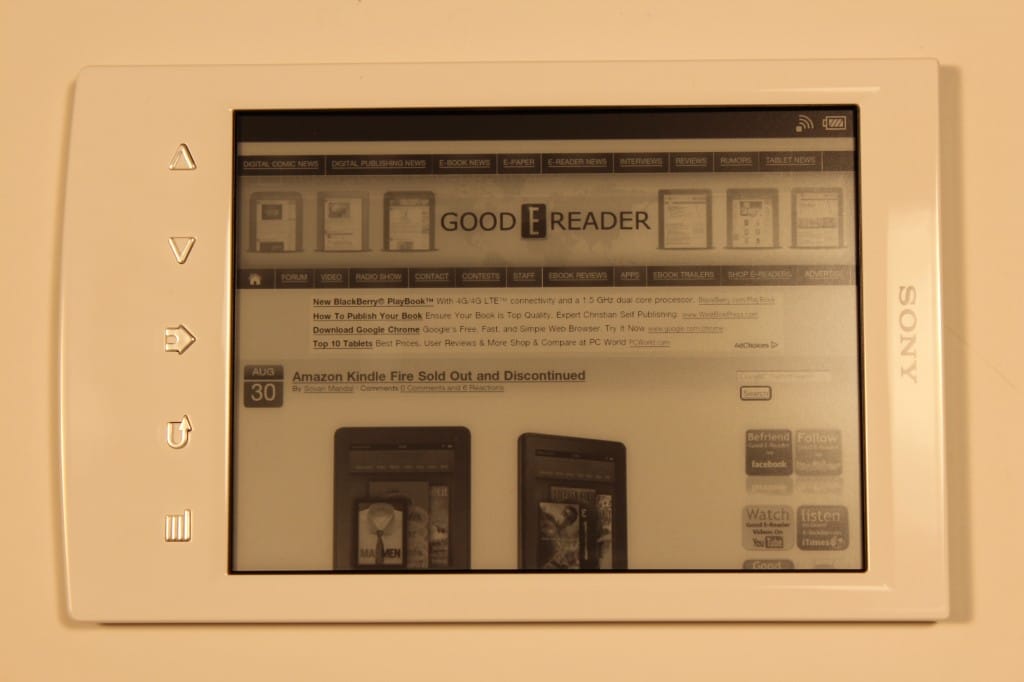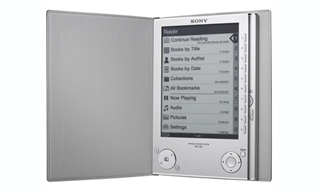

There are also standalone drawing and text memo applications on the second page of the homescreen. Handwritten notes are saved as an image within the RTF. This exports the notes and highlights to an RTF file. You have to add the ebook from the Reader to the library, open the document, then select export in the bottom right corner. Notes and highlights can be exported by using the Sony Desktop Software. Another option is to add notes and on-screen markup directly on top of the page. These two types of notes get attached to a specific word or phrase. This brings up an option to add notes by keyboard or by drawing. You can add notes to a word or phrase by highlighting it then selecting notes. There are three different ways to add notes.
#SONY EREADER DOWNLOAD UNSUCCESSFUL PDF#
Notes and Highlights: With the Sony PRS-T1, you can add notes and highlights to ebooks and PDF files. Also, one of my ebooks won't change from the default font for some reason-the same ebook changes fonts in other ebook readers just fine. And sometimes when changing fonts it changes italics to regular text, other times not-makes no sense. Font sizes often differ greatly from one ebook to the next. I noticed a few glitches with the new fonts, however. There's a setting in Application Preferences for setting the font size default for EPUBs too. The Reader remembers all your font settings for each particular ebook-font type and size, landscape mode, cropping, zoom, etc. The new font choices are great and are one of the best new features that Sony added. Sony no longer provides support for their old BBeB format, nor doc and docx files.įonts: For EPUB and TXT files there are eight font sizes and seven font choices. The Sony PRS-T1 support Adobe DRM, EPUB, PDF, and TXT formats. It could benefit from some firmware updates, but Sony is notorious for rarely issuing firmware updates for its Readers.hopefully that will be different this time. It's a little rough around the edges and sometimes the device operates laggier than it should. It's more intuitive than it was before, but on the downside it doesn't feel quite as polished.

The menu systems are all new, and so are the touchscreen functions. Everything looks and works differently, but it incorporates all the features of the older models.
#SONY EREADER DOWNLOAD UNSUCCESSFUL SOFTWARE#
The software on the PRS-T1 is a lot different from the older Sony Readers because it was build off of Android. The new fonts appear to make the contrast better, however. The Reader uses a 6-inch E Ink Pearl screen, the same screen technology as last year's models. Other IR touchscreen ereaders like the Kobo, Kindle, and Nook don't come with a stylus at all. The touchscreen works fine without a stylus, though, so it's not a huge deal. The cover doesn't have anywhere to put it either. The Sony PRS-T1 comes with a stylus, but unlike the older models, it doesn't have a slot in the frame to house it. The Reader has 2GB internal memory and accepts cards up to 32GB. There's a microSD card slot along the left side hidden behind a flap. On the bottom edge of the device there's a reset button, mini USB port, headphone jack, and power button with LED light.


This might not be as noticeable with the white or red models as with the black. It can be distracting unless you position the bulb just right, and even still there's always a little line of light reflecting along the edge. For instance, when using the lighted cover light reflects off the top edge. The glossiness of the plastic isn't a big deal but it can be annoying at times. The front is glossy plastic around the edges and matte plastic just below the screen above the buttons. It has a pleasant feel but is rather prone to showing smudges and scratches. Like many ereaders today, the back of the Sony PRS-T1 has a soft rubbery coating.


 0 kommentar(er)
0 kommentar(er)
